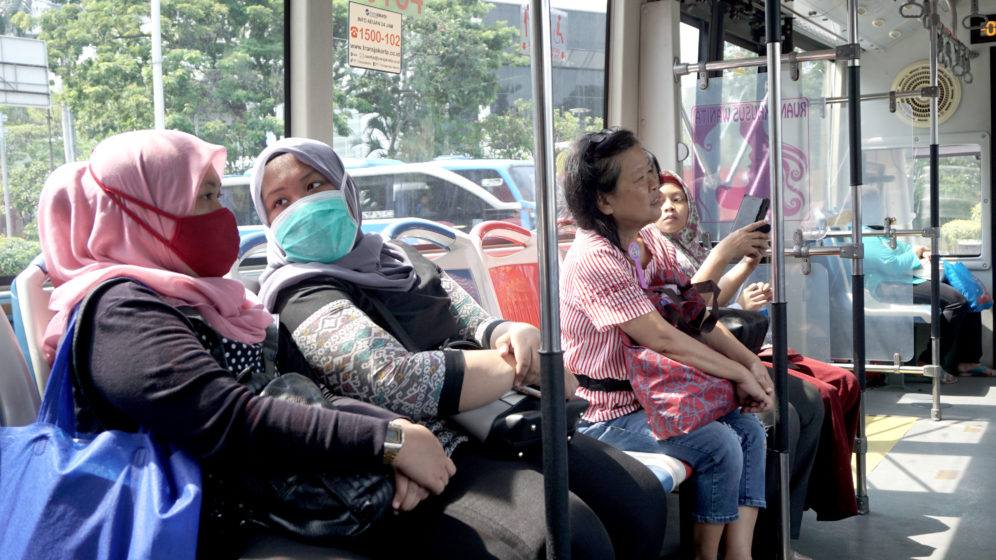
November 15, 2019
A Dignified Ride
Transjakarta, the longest BRT in the world at 244 km, has, in the past few years, more than doubled their daily ridership to 950,000 people. One of the reasons for this success is a well executed integration with other transportation cooperatives, expanding both reach and ridership. 15 years after the first corridor opened, Transjakarta’s ridership and transport network are still growing.
This blogpost is the second in an ongoing series about Transjakarta. Read the first here.
Transjakarta, the longest BRT in the world at 244 km, has served millions in the Indonesian capital since opening in 2004. Jakarta, Indonesia’s capital, is the largest city on the largest island, Java, and has a population of over 10 million people. Transjakarta, along with a host of new integrated transit, is providing a real alternative to the cars and small motorbikes that clog Jakarta’s streets.
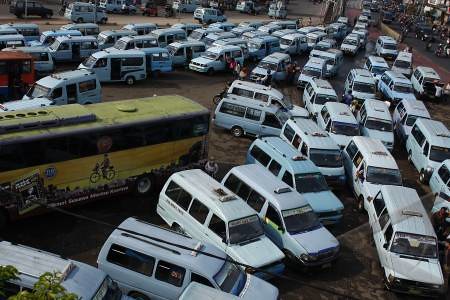
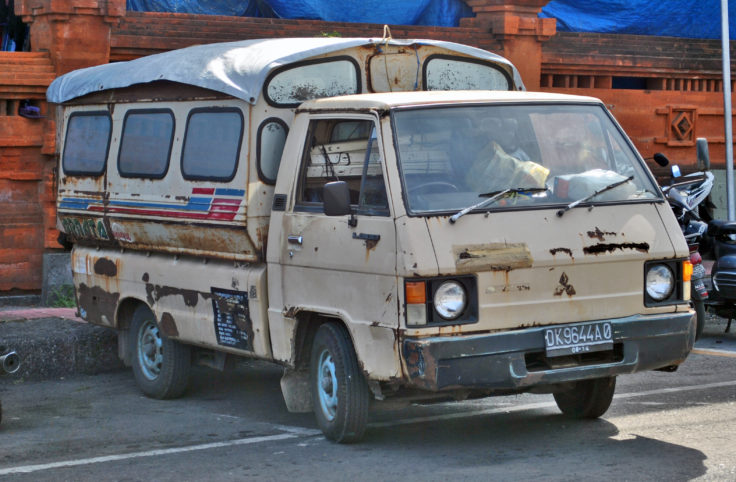
Minibus, or angkot fleets, have not provided customers with uniform vehicles or reliability of service.
Integration 101
Transjakarta’s growth is largely a result of making better use of the well-designed infrastructure of the BRT: a system of bus-only lanes and stations that zip passengers around the city outside of regular traffic. This, combined with increased enforcement of the physically-separated lanes, cuts travel time dramatically compared with any other mode. By creating a network that connects smaller vehicles, like local buses and paratransit operators, with BRT buses and their lanes, the system can serve a larger region and more residential areas that would otherwise not be accessible by the BRT bus. Transjakarta’s integration with medium sized bus operators, microbus operators, LRT (Light rail transit), and MRT, the new and upcoming metrorail in Jakarta, enables customers to cover more distance with fewer transfers. This has been particularly significant for ridership, with 20 percent of daily passengers coming directly from microbuses (known as angkots).
Microbus services, which are run by independent drivers in a cooperative, are particularly popular in the outskirts of the city. To determine the routes for the microbuses, ITDP Indonesia and Transjakarta performed a field survey and found that along frequently traveled routes there were many stops that, while informal, were still regularly serviced. Transjakarta based their formal routes on many of these informal routes and stops; this gave passengers and drivers an easy transition to the new service. Every newly formalized stop has a bus pole, sign, and route information. Buses and passengers are required to use these stops and cannot board or disembark in other locations as previously done. All of the new regulations have helped make the microbuses more efficient and responsive, making for a faster, safer, more convenient commute for nearly a million Jakartans.
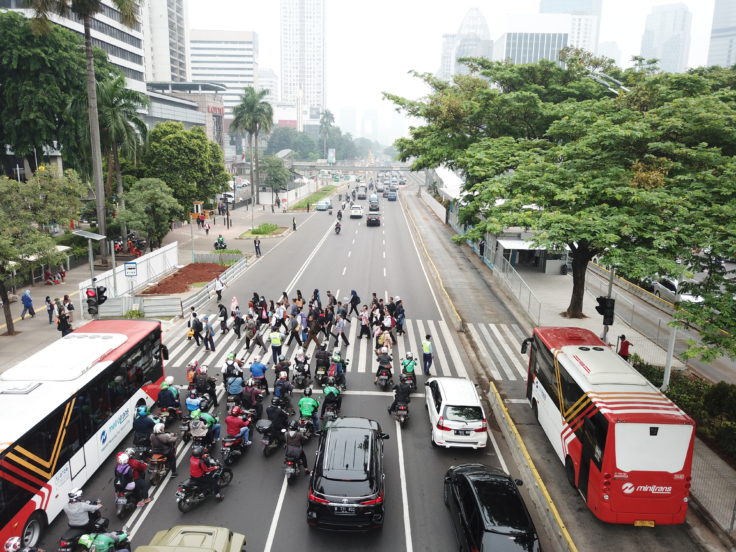
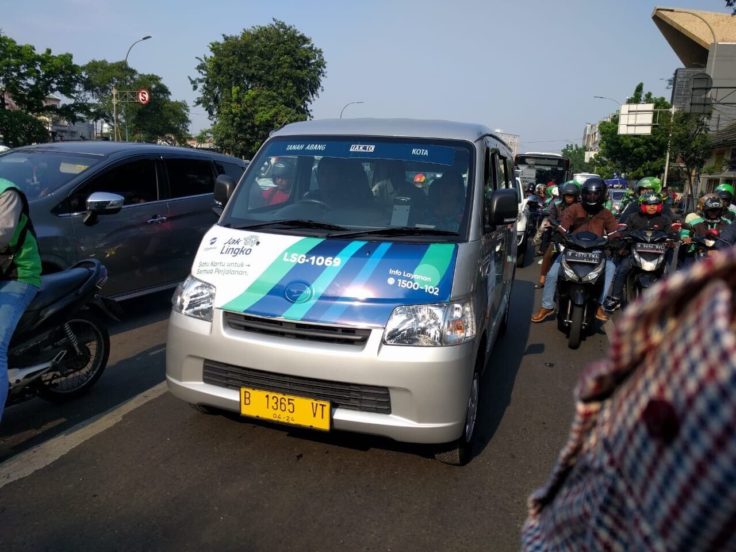
Integrated angkot fleet drivers receive salaries, enabling them to focus on passenger safety over maximizing passenger load.
Customer-focused Incentives
Jakarta’s microbus drivers were previously paid out of passenger fares only, which encouraged them to only pick up as many passengers as possible, with no incentives for a safe, comfortable, or efficient ride. Buses often left late, waiting to be full of passengers before leaving, and indirect routes to continue packing the bus were common. Today, all of the city’s microbus cooperatives now pay drivers salaries, although they remain independent operators within contract. Transjakarta provides a guaranteed salary to each driver in exchange for following a predetermined route on a set schedule. The salary rate also encourages drivers to drive longer routes that may include fewer passengers, but enable Transjakarta to reach new areas of the city. Drivers can now focus on providing service, safety, and following their routes in a timely fashion. Previously common behaviors like speeding or skipping stops are no longer necessary.
The initial push for integration was difficult as the partnership provided unknown factors, but after leading few collectives integrated with Transjakarta, others joined. One of the unexpected assists in the process was the head-to-head competition on some routes. Once collectives integrated with Transjakarta, they ran on specified routes but the unintegrated collectives, without formal routes would pick up passengers on the same routes – giving passengers an opportunity to participate in either service and observe the differences. This direct comparison highlighted the improvements Transjakarta provided for the passenger base. There was reliability in service and improved rider experience. Once some collectives integrated, many more caught on quickly as both drivers and passengers saw the clear improvements and chose Transjakarta over non-integrated services. Transjakarta has since signed contracts with all 11 microbus services.
Minimum Services Standard
Transjakarta has developed a set of Minimum Service Standards (MSS) that each cooperative had to agree to in their contract negotiations. The MSS require driver behavior that provides a safe, comfortable, and efficient journey for passengers and also regulates the fleet condition to meet specific criteria on body condition and cleanliness. Under the MSS, drivers cannot exceed a speed of 50 kilometers per hour and are required to stop at all designated stops. All drivers now receive training by Transjakarta on safe driving. Drivers are also trained to look for and respond to sexual harassment and to be aware of the safety of women and children, many of whom have very few other transportation options. If the MSS are not met the operators are fined by Transjakarta.

Moving Forward
The progress Jakarta has made in the last few years is encouraging, but the work is far from over. Next steps include upgrading the microbuses, and ensuring a high standard of maintenance going forward. Ticket readers in microbuses have run into IT problems, which requires Transjakarta to cover some fares until the problem is fixed. However, having predictable, and safer commutes has been a game changer for hundreds of thousands of people in Jakarta, and ridership is continuing to climb as a result.
